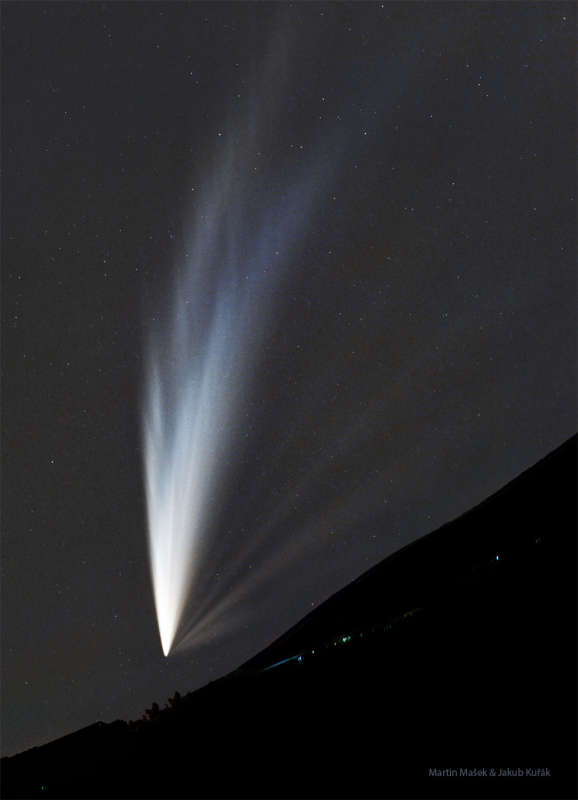
|
Explanation: Why does this comet have so many tails? C/2024 G3 (ATLAS) has developed several long and intricate tails visible from Earth's southern hemisphere over the past two weeks. Many observers reported seeing the impressive comet without any optical aid above the western horizon just after sunset. At least six different tails appear in the featured image captured five days ago from the dark skies above Paranal Observatory in Chile. One possible cause for the multiple tails is dust and gas being expelled from the comet's rotating nucleus. The outward push of the Sun's complex solar wind may also play a role. The huge iceberg-like nucleus of Comet ATLAS appears to have broken up near its closest approach to the Sun two weeks ago. Unfortunately, Comet ATLAS and its tails are expected to fade significantly over the coming weeks.
Your Sky Surprise:
What picture did APOD feature on your birthday? (post 1995)
|
January February |
| ||||||||||||||||||||||||||||||||||||||||||||||||
NASA Web Site Statements, Warnings, and Disclaimers
NASA Official: Jay Norris. Specific rights apply.
A service of: LHEA at NASA / GSFC
& Michigan Tech. U.
Based on Astronomy Picture
Of the Day
Publications with keywords: comet
Publications with words: comet
See also:
- APOD: 2025 February 2 Á Comet G3 ATLAS Disintegrates
- APOD: 2025 January 28 Á Comet G3 ATLAS over Uruguay
- Comet G3 ATLAS: a Tail and a Telescope
- APOD: 2025 January 21 Á Comet ATLAS over Brasilia
- APOD: 2025 January 20 Á Comet ATLAS Rounds the Sun
- APOD: 2025 January 13 Á Comet ATLAS Before Sunrise
- APOD: 2024 December 16 Á A Kilometer High Cliff on Comet Churyumov Gerasimenko
